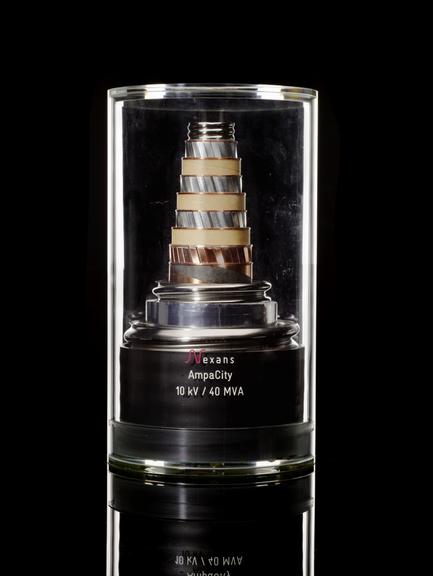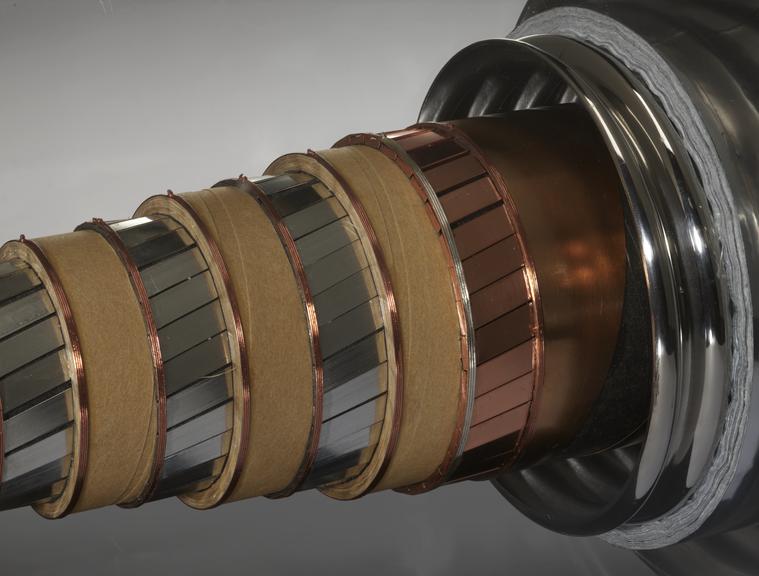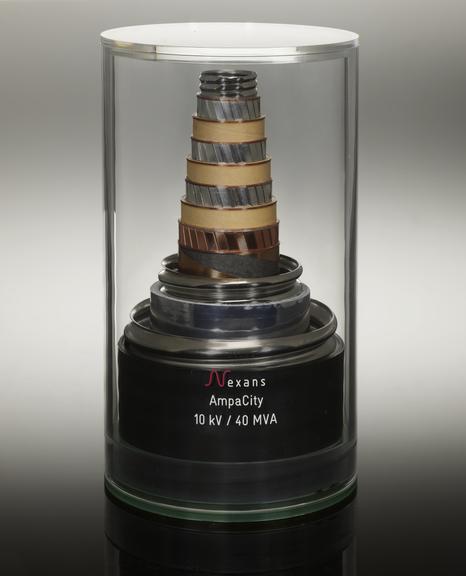






A telescoped sample of superconducting cable produced by Nexans, France, from the 1km 2300 A, 10 kV AC superconducting cable installed in Essen, Germany, within the framework of project AmpaCity in 2014.
Superconductors are materials that have zero electrical resistance once cooled to incredibly low temperatures. This means that an electric current can run through a superconducting cable indefinitely and without any loss. Renewable energy sources like wind and solar provide low carbon energy in the form of electricity, and to best get this electricity to people and businesses, we need to increase the resilience and capacity of our power grids.
This is where superconducting cables are of interest and importance. This object is a superconducting cable sample from the 2013 AmpaCity project by Nexans. This pioneering project was a world first: the installation of a 1km long, 2300 A, 10 kV AC superconducting cable in the city of Essen in Germany. When installation was complete in 2014, this cable was the world's longest superconducting cable.
Details
- Category:
- Electricity Supply
- Object Number:
- 2023-227
- Materials:
- steel (metal), paper-polypropylene composite, copper (metal), bronze (copper, tin alloy), carbon black paper, superconducting Bi2Sr2Ca2Cu3O10 filaments, silver (metal), aluminium (metal) and plexiglass
- Measurements:
-
overall: 264 mm x 150 mm x 150 mm, 2.8 kg
- type:
- cable




